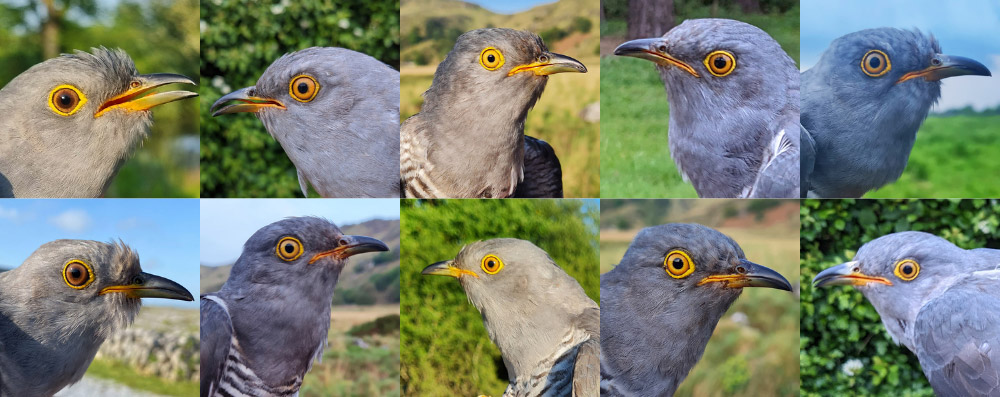BTO introduces cuckoo 'class of 2023'
The British Trust for Ornithology (BTO) has fitted 10 more Common Cuckoos with state-of-the-art satellite tags this spring.
The tagging is part of the BTO's Cuckoo Tracking Project, which will allow scientists and the general public alike to follow their annual migration to central Africa and back.
The UK has lost more than a third of its Common Cuckoos in the past 25 years, but the full reasons why are still unclear. Following these birds on migration will help researchers understand the pressures they face.
Irish cuckoos have been included in the project this year for the first time, as part of a collaboration between BTO and Ireland's National Parks & Wildlife Service. Ireland's Common Cuckoo population has declined by 27% since the early 1980s.

A total of 10 Common Cuckoos were tagged by the BTO this summer, including four in Ireland (BTO).
Since it began in 2011, the BTO Cuckoo Tracking Project has tagged more than 100 individual cuckoos. Its work has revealed that English cuckoos migrate more often via routes associated with higher mortality than Scottish birds. This is the first year that the project has tagged cuckoos in Ireland, which will reveal for the first time the routes that these birds take.
The differences in survival rates are linked to the conditions the birds encounter at the sites in southern Europe where they stop to refuel. The availability of large insect prey on their breeding grounds in the UK and Ireland may also impact their ability to successfully complete their migration south.
Four Common Cuckoos were tagged in Ireland: 'Cuach Carran' in Burren National Park in Co Clare; and 'Cuach Cores', 'Cuach Torc' and 'KP' near Incheens in Killarney National Park, Co Kerry.
In England, 'George' and 'Michael' were tagged at Loddon Common in the Norfolk Broads, 'Jasper' was tagged in King's Forest, Suffolk, and 'Trent' was tagged at Ryall, Worcestershire.
Meanwhile, researchers were in for a surprise at Knepp, Sussex, when they caught a bird they had tagged the previous year but who was presumed to have died. 'Bluey', as this individual was named, was fitted with a new tag alongside a new bird, 'Sayaan', bringing the total number of new tags deployed to 10.
Dr Chris Hewson, lead scientist on the project, said: "It's fantastic to see 10 more Cuckoos heading off with satellite tags newly fitted. These birds will help us to better understand the pressures they face, the reasons for the population declines they are undergoing in large parts of the UK and how we can help them to successfully complete their arduous migrations in the rapidly changing world we share. It's especially exciting to see birds from Ireland tagged for the first time - we're looking forward to learning about the migrations of these cuckoos from the western extremity of the species' breeding range."
Malcolm Noonan, Irish Minister of State for Heritage, added: "I am delighted that the National Parks & Wildlife Service has teamed up with BTO for this project. It will be very interesting to see the results over time. Last weekend we saw one of the birds move away from Killarney National Park towards Tipperary, and another shoot across the east Cork coast before double-backing to Limerick. It will be fantastic to get a full picture of the cuckoos' movements at home here in Ireland, when they migrate and, hopefully, when they return to our shores next year."
Members of the public can follow the BTO Cuckoos on migration by visiting www.bto.org/cuckoos.

